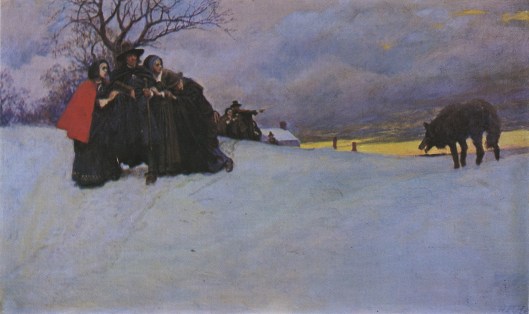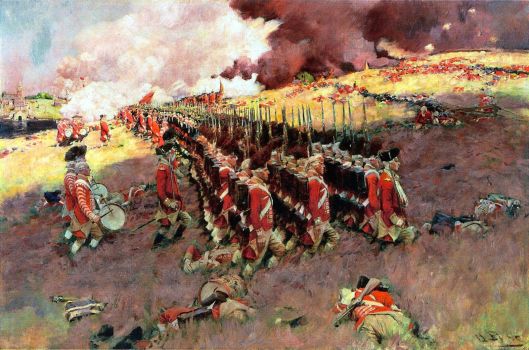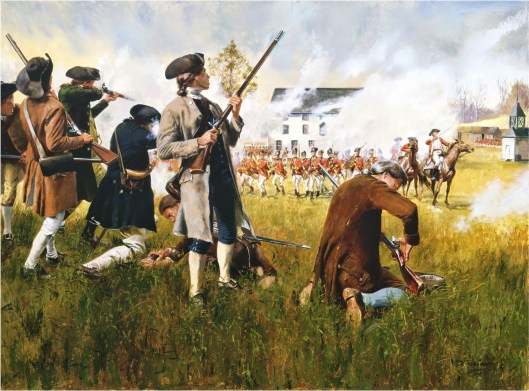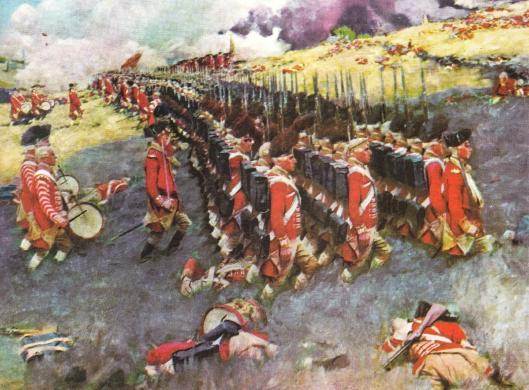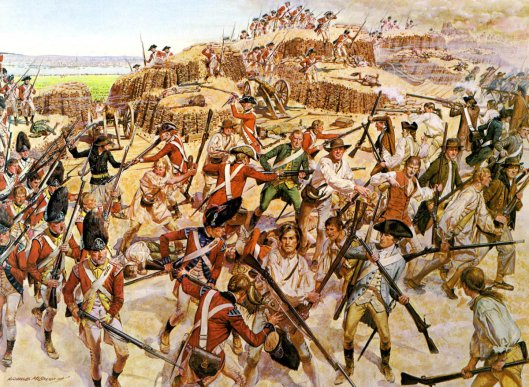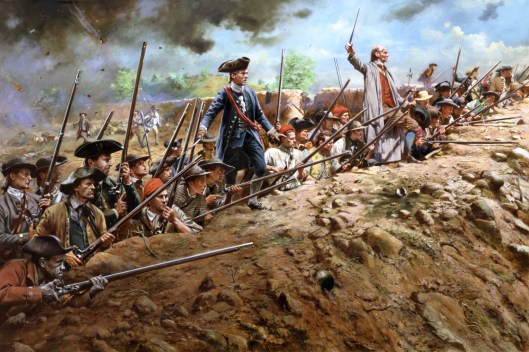Tags
Agincourt, Anglo-Saxon, armor, Bayeux Tapestry, chain-mail, Crecy, Dark Ages, Embroidery, Howard Pyle, knights of Dol Amroth, Medieval books, medieval manuscript drawings, N.C. Wyeth, Norman knight, Pauline Baynes, Romans, sub-Roman period, Sutton Hoo, The Lord of the Rings, The Rohirrim, The Story of King Arthur and His Knights, Tolkien
Welcome, as always, dear readers.
In a letter to Miss [Rhona] Beare, of 14 October, 1958, JRRT wrote to answer what was clearly a question about dress in The Lord of the Rings:
“Question 4. I do not know the detail of clothing. I visualize with great clarity and detail scenery and ‘natural’ objects, but not artefacts. Pauline Baynes drew her inspiration for F. Giles largely from medieval MS drawings—except for the knights (who are a bit ‘King-Arthurish’)* the style seems to fit well enough.” (Letters, 280)
To which he adds this footnote:
“*Sc. [= “Know/understand”] belong to our ‘mythological’ Middle-Ages which blends unhistorically styles and details ranging over 500 years, and most of which did not of course exist in the Dark Ages of c. 500 A.D.”
In the next paragraph he adds:
“The Rohirrim were not ‘mediaeval’, in our sense. The styles of the Bayeux Tapestry (made in England) fit them well enough, if one remembers that the kind of tennis-nets [the] soldiers seem to have on are only a clumsy conventional sign for chain-mail of small rings.” (Letters, 280-281)
The Bayeux Tapestry (which should really be called the “Bayeux Embroidery”, since it’s actually a long piece of cloth with hundreds of figures and details stitched on to it, rather than woven into it) presents us with a detailed history of the invasion of England in 1066AD. The soldiers Tolkien is talking about look like this:

You can see what he means by “tennis-nets”—which should really look like this:
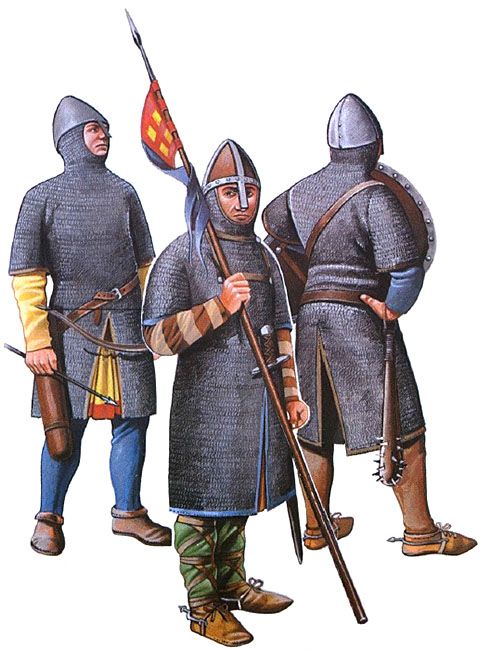
That chain-mail, then, looks like this:

And, at the bottom of this next illustration, you can see how it’s made:

We know, then, how JRRT envisaged the Rohirrim in its eoreds, marching towards Minas Tirith, but how did he imagine other soldiers, we’ve asked ourselves, and, in particular, the knights of Dol Amroth—the only soldiers specifically described as such in The Lord of the Rings?

JRRT writes of them as they enter Minas Tirith:
“And last and proudest, Imrahil, Prince of Dol Amroth, kinsman of the Lord, with gilded banners bearing his token of the Ship and the Silver Swan, and a company of knights in full harness riding grey horses…”(The Return of the King, Book Five, Chapter 1, “Minas Tirith”)
“Full harness” means “complete armor”. When we think of the term, we think of something later than the Normans, who are, after all, just wearing a kind of very long ringed shirt. Here’s a useful chart to give you of an idea of what we mean.

So, since “full harness” doesn’t look like the Rohirrim, how might it look?
In Jackson’s films, we don’t believe that we ever see those knights singled out, as we see the Rohirrim. The best we could find was this picture of Faramir’s men about to mount a cavalry charge against what appears to be Osgiliath. (We’ve talked about this in a much earlier posting—one of the most unbelievable moments in the whole of Jackson’s work.)
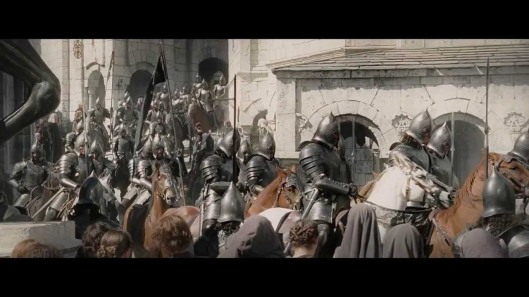
This is a big picture, but the details, unfortunately, aren’t very clear. There are a few things, however, which we found rather odd:
- although there appear to be a few lances with penons among them, most seem to be armed only with swords—a close-up weapon—which is why actual knights also carried lances—heavy cavalry came crashing down on infantry or slamming into enemy mounted men—or intended to—spearing right and left and then drawing swords (or using maces or battle axes)
- a minor detail, but everyone seems to be wearing his sword on the right-hand side, which would have made it very hard to draw, unless all were left-handed men!
- the helmets and armor seem very standardized, and we would believe that budgetary considerations probably influenced this uniformity—50 identical helmets were probably cheaper to make than 50 different ones—but such sameness reminds us more of Roman imperial troops than of any western medieval army we can think of.

We assume, then, that this is the film’s view of soldiers at least like Imrahil’s men, but when Tolkien wrote “a company of knights in full harness”: what might he have had in mind? We think there is a clue in that adjective “King-Arthurish”, which he uses of Pauline Bayne’s illustrations and in his footnote, where he refers to “our ‘mythological Middle-Ages”. What does he mean?
JRRT would have been about ten when Howard Pyle published his The Story of King Arthur and His Knights in 1903.

Here is how Pyle saw Arthur’s knights.


Could this have inspired Tolkien’s view of Imrahil’s men? (Judge for yourself by following this LINK.)
Tolkien would have been nearly 30 when The Boy’s King Arthur, illustrated by N.C. Wyeth, was published in 1922,
but, if this were in among his children’s books, perhaps these illustrations might have given him ideas. (And here’s a LINK to your own copy, from the Internet Archive.)



These are two well-known sets of illustrations of Arthurian figures, both available in Tolkien’s early lifetime. If Arthur was real, of course, he would have lived, as JRRT was well aware, in what is called the “sub-Roman period”, c.500AD—at the beginning of the so-called “Dark Ages”– and he and his men would actually have looked like this:

But this is where “our ‘mythological’ Middle-Ages” comes in—little would have been known, when JRRT was writing The Lord of the Rings, of what such warriors would have looked like, although the spectacular Sutton Hoo find of 1939, with its splendid helmet, would have given an inkling, once restored.



Because such knowledge was lacking, however, the historical Arthur (if there was one) had been moved to the Middle-Ages and re-equipped as a military figure of a much later era, and we believe that, when Tolkien wrote “Arthurish” and “knights”, this is what he meant—and how we’ve always seen Arthur, not only from books (and lots of films) but also from the armor galleries in a number of museums, from the Metropolitan Museum of Art in New York

to the Higgins Armory in Massachusetts
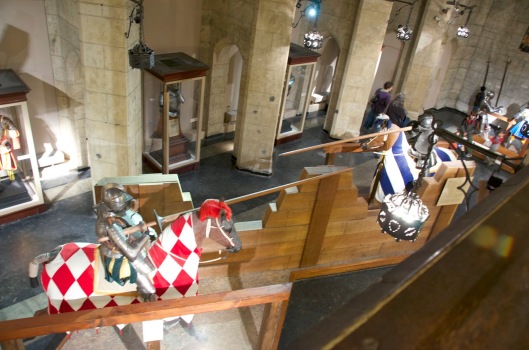
to the Philadelphia Museum of Fine Arts

to the Tower of London.

And, as we’ve discussed before, Prince Valiant, has been an influence from childhood (talk about ‘mythological’ Middle-Ages!).

And so, in turn, we imagine—and we think that JRRT did, too–the “company of knights in full harness” to have been individuals, brightly clothed in heraldic colors, their armor that, perhaps, of Crecy, in 1346—

or Agincourt, in 1415.

And you, dear readers, what do you think?
Thanks, as ever, for reading!
MTCIDC
CD




